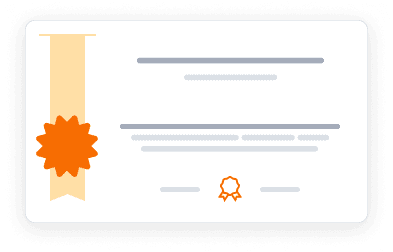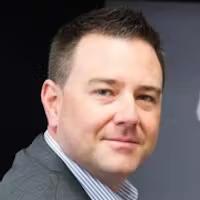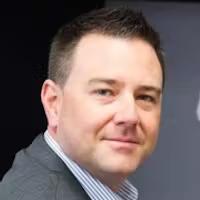Master advanced state estimation techniques and sensor fusion algorithms for precise autonomous vehicle localization and navigation system development.
Master advanced state estimation techniques and sensor fusion algorithms for precise autonomous vehicle localization and navigation system development.
This course cannot be purchased separately - to access the complete learning experience, graded assignments, and earn certificates, you'll need to enroll in the full Self-Driving Cars Specialization program. You can audit this specific course for free to explore the content, which includes access to course materials and lectures. This allows you to learn at your own pace without any financial commitment.
4.7
(822 ratings)
51,370 already enrolled
Instructors:
English
پښتو, বাংলা, اردو, 3 more
What you'll learn
Implement parameter and state estimation methods
Develop models for GPS and IMU sensors
Apply extended and unscented Kalman Filters
Master LIDAR scan matching techniques
Create multi-sensor fusion systems
Build complete vehicle state estimators
Skills you'll gain
This course includes:
3.7 Hours PreRecorded video
5 quizzes
Access on Mobile, Tablet, Desktop
FullTime access
Shareable certificate
Closed caption
Get a Completion Certificate
Share your certificate with prospective employers and your professional network on LinkedIn.
Created by
Provided by

Top companies offer this course to their employees
Top companies provide this course to enhance their employees' skills, ensuring they excel in handling complex projects and drive organizational success.





There are 6 modules in this course
This comprehensive course explores advanced state estimation and localization techniques for autonomous vehicles. Students learn essential methods including least squares estimation, Kalman filtering, and sensor fusion. The curriculum covers GPS/INS integration, LIDAR processing, and multi-sensor fusion strategies. Through hands-on projects using the CARLA simulator, participants implement an Error-State Extended Kalman Filter for vehicle localization.
Welcome to Course 2: State Estimation and Localization for Self-Driving Cars
Module 1 · 1 Hours to complete
Least Squares
Module 2 · 7 Hours to complete
State Estimation - Linear and Nonlinear Kalman Filters
Module 3 · 7 Hours to complete
GNSS/INS Sensing for Pose Estimation
Module 4 · 2 Hours to complete
LIDAR Sensing
Module 5 · 2 Hours to complete
Putting It together - An Autonomous Vehicle State Estimator
Module 6 · 6 Hours to complete
Fee Structure
Instructors
Pioneering Autonomous Robotic Systems Expert
Dr. Jonathan Kelly is the Dean’s Catalyst Professor at the University of Toronto Institute for Aerospace Studies (UTIAS) and leads the Space & Terrestrial Autonomous Robotic Systems (STARS) Laboratory. His expertise spans developing advanced robotic systems that can fly, drive, swim, and grasp. Dr. Kelly completed his Ph.D. at the University of Southern California, focusing on sensor fusion for robust robot navigation, followed by postdoctoral research at the Massachusetts Institute of Technology. Before academia, he worked as a software engineer at the Canadian Space Agency, contributing to space technology development.
Associate Professor
Prof. Steven Waslander is a leading authority on autonomous aerial and ground vehicles, including multirotor drones and autonomous driving, Simultaneous Localization and Mapping (SLAM) and multi-vehicle systems. He received his B.Sc.E.in 1998 from Queen’s University, his M.S. in 2002 and his Ph.D. in 2007, both from Stanford University in Aeronautics and Astronautics, where as a graduate student he created the Stanford Testbed of Autonomous Rotorcraft for Multi-Agent Control (STARMAC), the world’s most capable outdoor multi-vehicle quadrotor platform at the time. He was recruited to Waterloo from Stanford in 2008, where he founded and directs the Waterloo Autonomous Vehicle Laboratory (WAVELab), extending the state of the art in autonomous drones and autonomous driving through advances in localization and mapping, object detection and tracking, integrated planning and control methods and multi-robot coordination. In 2018, he joined the University of Toronto Institute for Aerospace Studies (UTIAS), and founded the Toronto Robotics and Artificial Intelligence Laboratory (TRAILab). Prof. Waslander’s innovations in drone research were recognized by the Ontario Centres of Excellence Mind to Market award for the best Industry/Academia collaboration (2012, with Aeryon Labs), best paper and best poster awards at the Computer and Robot Vision Conference (2018), and through two Outstanding Performance Awards, and two Distinguished Performance Awards while at the University of Waterloo. His work on autonomous vehicles has resulted in the Autonomoose, the first autonomous vehicle created at a Canadian University to drive over 100 km on public roads. His insights into autonomous driving have been featured in the Globe and Mail, Toronto Star, National Post, the Rick Mercer Report, and on national CBC Radio. He is Associate Editor of the IEEE Transactions on Aerospace and Electronic Systems, has served as the General Chair for the International Autonomous Robot Racing Competition (IARRC 2012-15), as the program chair for the 13th and 14th Conference on Computer and Robot Vision (CRV 2016-17), and as the Competitions Chair for the International Conference on Intelligent Robots and Systems (IROS 2017).
Testimonials
Testimonials and success stories are a testament to the quality of this program and its impact on your career and learning journey. Be the first to help others make an informed decision by sharing your review of the course.
Frequently asked questions
Below are some of the most commonly asked questions about this course. We aim to provide clear and concise answers to help you better understand the course content, structure, and any other relevant information. If you have any additional questions or if your question is not listed here, please don't hesitate to reach out to our support team for further assistance.
.png&w=128&q=75)




